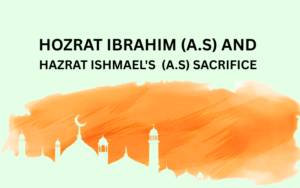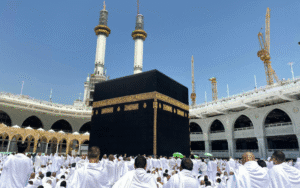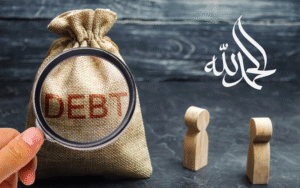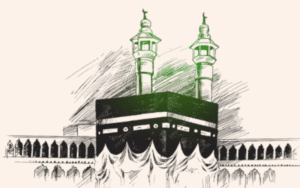A Complete Guide to Qurbani Rules and Eid al-Adha
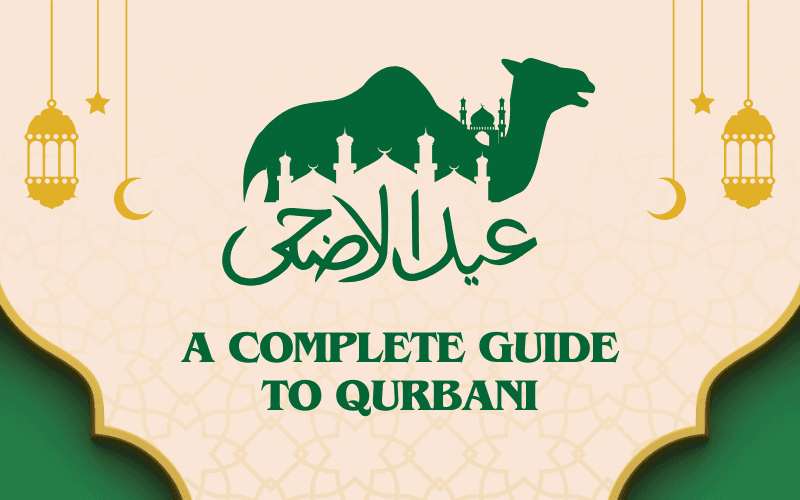
The festivals of Eid al-Fitr and Eid al-Adha were established for the Muslim community in the 2nd year of the Hijri calendar. Eid al-Adha is not merely a celebration; it is a profound commemoration of the ultimate sacrifice and love for Allah shown by Prophet Ibrahim (AS) and his son, Prophet Ismail (AS)
The act of slaughtering an animal in a Shari’ah-compliant manner on the days of Eid al-Adha to seek the pleasure of Allah is known as ‘Qurbani’ or ‘Udhiyah’. The core objective of this ritual is not simply the shedding of blood but to cultivate Taqwa—a deep sense of piety and God-consciousness—within our hearts. This comprehensive guide covers all the essential practices from the beginning of the month of Dhul Hijjah until the completion of the Qurbani, detailing all the necessary Qurbani rules.
Part 1: Your Guide to the First Ten Days of Dhul Hijjah
1. The Virtues of the First Ten Days of Dhul Hijjah
The first ten days of Dhul Hijjah are the most sacred days of the year, filled with immense blessings. The Messenger of Allah, Prophet Muhammad (peace be upon him), said,
“There are no days in which righteous deeds are more beloved to Allah than in these ten days.” The people asked, “O Messenger of Allah! Not even Jihad in the cause of Allah?” He replied, “Not even Jihad in the cause of Allah, except for a man who goes out with his life and wealth and does not return with either (i.e., is martyred).”
(Sahih al-Bukhari, hadith: 969)
2. The Significance of Fasting on the Day of Arafah (9th Dhul Hijjah)
For those not performing the Hajj pilgrimage, fasting on the 9th day of Dhul Hijjah, known as the Day of Arafah, is a highly virtuous act. The Prophet (peace be upon him) said,
“Regarding the fast of the Day of Arafah, I hope from Allah that it will expiate the sins of the previous year and the coming year.”
(Sahih Muslim, hadith: 1162)
3. Forgoing Hair and Nail Trimming for the One Offering Qurbani
It is a recommended practice for anyone intending to perform the Qurbani sacrifice to refrain from cutting their hair and nails. The Prophet (peace be upon him) said,
“When you see the new moon of Dhul Hijjah, and one of you intends to offer a sacrifice, let him not cut his hair or his nails until he has offered his sacrifice.”
(Sahih Muslim, hadith: 1977)
This is a Mustahab (recommended) act. It is mentioned in a hadith that even those who are unable to afford a sacrifice but refrain from cutting their hair and nails for the sake of Allah may receive the reward of a complete Qurbani from Allah.
4. Reciting the Takbir al-Tashreeq
Reciting the Takbir is a Sunnah that glorifies Allah and signifies the joy of Eid. It is required for every Muslim to recite the Takbir al-Tashreeq after every obligatory (Fardh) prayer, starting from the Fajr prayer on the 9th of Dhul Hijjah until the Asr prayer on the 13th of Dhul Hijjah (a total of 23 prayers).
The Words of the Takbir:
اللَّهُأَكْبَرُاللَّهُأَكْبَرُلَاإلَهَإلَّااللَّهُوَاَللَّهُأَكْبَرُاللَّهُأَكْبَرُوَلِلَّهِالْحَمْدُ
Transliteration: “Allahu Akbar, Allahu Akbar, La ilaha illallah, Wallahu Akbar, Allahu Akbar, Wa lillahil hamd.”
Meaning: “Allah is the Greatest, Allah is the Greatest. There is no god but Allah. And Allah is the Greatest, Allah is the Greatest, and to Allah belongs all praise.”
Part 2: Eid al-Adha Prayer and Recommended Practices
1. The Sunnahs of Eid Day
- It is a Sunnah to not eat anything before the Eid al-Adha prayer and to have the first meal of the day from the meat of one’s own Qurbani animal after returning from the prayer.
- Perform Ghusl (ritual bath), maintain personal hygiene, and wear the best available clothes.
- Take one route to the Eid prayer ground and a different route when returning home.
- Recite the Takbir al-Tashreeq in a loud voice while heading to the prayer ground.
2. Important Rulings for the Eid Prayer
- Timing: The Eid al-Adha prayer is performed after sunrise when the sun has risen to the height of a spear (approximately 15-20 minutes after sunrise). It is best to offer this prayer as early as possible.
- Extra Takbirs: The Eid prayer includes additional Takbirs. According to the Hanafi school, there are a total of 6 extra Takbirs: 3 in the first rak’ah after the opening supplication (Thana) and before the Quranic recitation, and 3 in the second rak’ah after the recitation and before going into Ruku (bowing). Other schools of thought mention 12 Takbirs. It is essential to follow the Imam leading the prayer.
- Women’s Participation: Women can and are encouraged to attend the Eid prayer, positioned behind the men’s congregation with proper Hijab. This is confirmed by hadith. Menstruating women can attend the Eid ground to listen to the sermon (Khutbah) and partake in the supplications, but they should refrain from performing the prayer itself.
- The Sermon (Khutbah): Listening to the Imam’s sermon after the Eid prayer is a Sunnah. Leaving without a valid reason is discouraged, as it means missing out on the rewards and blessings of the sermon.
Part 3: Detailed Qurbani Rules (The Sacrifice)
This section covers the specific jurisprudential details, often referred to as Qurbani masail, that are essential for a valid sacrifice.
1. The Ruling on Qurbani: Obligatory or Emphasized Sunnah?
- Hanafi School: According to the Hanafi school of thought, Qurbani is Wajib (obligatory) upon every adult, sane Muslim male and female who meets the Nisab threshold (possessing wealth equivalent to 7.5 tolas of gold or 52.5 tolas of silver, beyond their basic needs) during the days of sacrifice.
- Other Schools of Thought: In other major schools, it is considered a Sunnah Mu’akkadah (a highly emphasized and confirmed Sunnah). The importance of this act is highlighted in a hadith where the Prophet (peace be upon him) said, “Whoever has the means to offer a sacrifice but does not do so, let him not come near our prayer place.” (Ibn Majah, hadith: 3123). This hadith underscores the gravity of this act within the framework of Islamic teachings and Qurbani rules.
2. What Is the Correct Time for Qurbani?
The time for sacrifice begins after the Eid prayer on the 10th of Dhul Hijjah and lasts until the sunset of the 12th of Dhul Hijjah. This is the view of Imam Abu Hanifa. However, according to Imam Shafi’i, Imam Malik, Imam Ahmad ibn Hanbal, and the majority of scholars, the time for Qurbani extends until the sunset of the 13th of Dhul Hijjah. Therefore, there is a valid provision to perform the sacrifice on the 13th if needed. Adhering to this timeframe is one of the most fundamental Qurbani rules.
Any animal slaughtered before the Eid prayer will be considered a general act of charity (Sadaqah) and not a Qurbani. In such a case, another animal must be sacrificed to fulfill the obligation.
3. Key Qurbani Rules: Animal Requirements and Conditions
The validity of the sacrifice depends on meeting the specific Qurbani animal requirements.
- Permissible Animals: The only animals permitted for Qurbani are goats, sheep, rams, cows, buffalo, and camels.
- Minimum Age of the Animal:
- Goat, Sheep, Ram: Must be at least 1 year old. However, a 6-month-old ram or sheep that is so healthy and well-built that it appears to be a 1-year-old is also permissible.
- Cow and Buffalo: Must be at least 2 years old.
- Camel: Must be at least 5 years old.
- Animals with Defects That Invalidate the Sacrifice:
- An animal that is clearly blind in one or both eyes.
- An animal that is obviously limping and cannot walk to the place of slaughter..
- An animal that is extremely weak or emaciated, with no marrow in its bones.
- An animal with more than one-third of its ear or tail cut off.
- An animal with a horn broken from the root.
- A goat, sheep, or ram can only be offered on behalf of one person.
- A cow, buffalo, or camel can be shared by a maximum of seven people.
- The Most Critical Condition: The intention of every single partner must be purely to seek the pleasure of Allah. If even one partner’s intention is simply to obtain meat, the Qurbani of all other partners will become invalid. This is because, in a shared Qurbani, the entire animal is considered a single unit dedicated to Allah. If any part of this unit is intended for a worldly purpose, the entire act of worship is nullified, as sincerity of intention is the foremost condition for its acceptance. This principle of sincere intention is paramount among all Qurbani rules related to partnership.
- Qurbani with Aqiqah: Some Hanafi jurists have permitted including a share for a child’s Aqiqah (sacrifice after birth) in a cow or camel. However, many other scholars disagree because the occasions for the two rituals are different. To be on the safe side, it is better to perform them separately.
5. One Sacrifice on Behalf of the Family
It is established from the practice of the Prophet (peace be upon him) and his companions that they would sacrifice one goat on behalf of themselves and their entire family. This means if the head of the household performs one sacrifice, the Sunnah is fulfilled for all family members, and they all share in the reward. It’s a point of discussion within the detailed Qurbani rules how this applies to families with multiple financially independent members.
However, according to the Hanafi school, if multiple members of a single household (e.g., a father, adult son, and wife) each individually meet the Nisab threshold, then it is Wajib (obligatory) for each of them to offer their own separate Qurbani, either by sacrificing a goat/sheep each or by taking shares in a larger animal.
Part 4: The Act of Slaughter and Post-Sacrifice Rulings
1. The Method of Slaughter and Supplication (Dua)
It is best for the person offering the sacrifice to slaughter the animal themselves. If this is not possible, they can delegate it to someone else but should try to be present. The animal should be laid on its left side facing the Qibla (the direction of Kaaba in Makkah). The slaughter should be done swiftly with a very sharp knife to minimize the animal’s suffering. It is mandatory to say “Bismillahi Allahu Akbar” (In the name of Allah, Allah is the Greatest) before slaughtering.
The recommended supplication, or dua for Qurbani, during the slaughter is: “Bismillahi Allahumma taqabbal min [mention your name and family’s name]…” (O Allah, accept this from me and my family).
2. Qurbani Rules for Qurbani Meat Distribution and the Hide
- Qurbani Meat Distribution: It is Mustahab (recommended and praiseworthy) to divide the meat into three portions: one-third for your own family, one-third for relatives, friends, and neighbors, and one-third for people experiencing poverty and those in need. Meat can also be given to non-Muslim neighbors.
- Selling the Meat: It is strictly forbidden (Haram) to sell the meat of the Qurbani animal.
- The Hide: The hide of the animal can be used for personal purposes. However, if it is sold, the entire proceeds must be given as charity to individuals with low income.
- Butcher’s Fee: The butcher or slaughterer cannot be paid with the meat or hide of the Qurbani animal. Their wages must be paid separately with cash or other means.
3. A Detailed Guide: Qurbani for the Deceased
Offering a Qurbani for the deceased is permissible and is an act of great reward. There are two scenarios:
- Voluntary Sacrifice for Reward (Isal al-Thawab): A person can voluntarily offer a sacrifice with the intention of sending the rewards to a deceased parent, relative, or pious person. The rulings for this meat are the same as a regular Qurbani.The person offering the sacrifice can eat from it and share it with relatives and people with low income.
- Example: A son sacrifices a goat for the forgiveness of his deceased father. He can consume the meat, share it with family, and distribute it to the needy.
- Sacrifice Based on a Bequest (Wasiyyah): If a person, before their death, made a will (Wasiyyah) stipulating that a Qurbani should be performed from one-third of their estate, then it is obligatory to fulfill this will. In this case, the entire meat must be distributed among people experiencing poverty and those in need.. The person executing the will, their wealthy relatives, or anyone who meets the Nisab threshold cannot eat from this meat.
- Example: A person left a will that a sacrifice be made from his property every year. The entire meat from that sacrifice must be given to people with low income.
4. Can You Donate Money Instead of Performing Qurbani?
Donating the monetary equivalent of an animal does not fulfill the obligation of Qurbani. Qurbani is a specific, time-bound ritual and a symbol (Sha’irah) of Islam. Its primary purpose is to follow the command of Allah by shedding the blood of an animal as an act of devotion and sacrifice. It is not merely an act of charity. Substituting it with a monetary donation is therefore not permissible according to the established Qurbani rules.
For example, if a person donates money to individuals with low income during the time of prayer instead of performing the prayer itself, arguing that both are acts of worship, their prayer would not be considered fulfilled
. Similarly, donating money instead of sacrificing an animal does not fulfill the Qurbani, because every act of worship has a specific form and method prescribed by the Shari’ah.
Conclusion
Finally, it is essential to remember that Qurbani is not just a ritualistic slaughter of an animal. It is a symbolic lesson in sacrificing our inner flaws—our ego, greed, and worldly desires. The ultimate goal is to revive the spirit of complete submission demonstrated by Prophet Ibrahim (peace be upon him) and to perform this great act of worship solely for the pleasure of Allah.
May Allah accept our sacrifices not for their blood and flesh, but for the Taqwa (piety) that emanates from our hearts, and may He grant us the ability to embody the true lessons of this noble act in our lives. Ameen.
Frequently Asked Questions
What is Qurbani and what is its purpose?
Qurbani, also known as Udhiyah, is the act of sacrificing an animal in a Shari'ah-compliant manner during the days of Eid al-Adha. Its purpose is not just to shed blood but to cultivate Taqwa (piety and God-consciousness) and to commemorate the ultimate sacrifice and submission of Prophet Ibrahim (AS) and his son Prophet Ismail (AS) to Allah's will.
What are the key rules for a Qurbani animal to be valid?
For a Qurbani to be valid, the animal must meet specific requirements:
- It must be a goat, sheep, ram, cow, buffalo, or camel.
- It must be of a minimum age: 1 year for goats/sheep, 2 years for cows/buffalo, and 5 years for camels.
- It must be free from major defects such as clear blindness, a severe limp, extreme emaciation, or having more than one-third of its ear or tail cut off.
What is the correct time to perform the Qurbani sacrifice?
The time for the sacrifice begins after the Eid al-Adha prayer on the 10th of Dhul Hijjah. According to the majority of scholars, the valid time for the sacrifice extends until the sunset of the 13th of Dhul Hijjah. Any animal slaughtered before the Eid prayer is not considered a valid Qurbani.
Can a Qurbani be shared, and what is the rule for shared sacrifice?
Yes, a cow, buffalo, or camel can be shared by up to seven people. The most critical condition for a shared Qurbani is that the intention of every single partner must be purely to seek the pleasure of Allah. If even one person's intention is simply to obtain meat, the sacrifice becomes invalid for all partners. A goat, sheep, or ram can only be sacrificed for one person.
How should the Qurbani meat be distributed?
It is recommended (Mustahab) to divide the Qurbani meat into three portions:
- One-third for your own family.
- One-third for relatives, friends, and neighbors.
- One-third for people experiencing poverty and those in need.
It is strictly forbidden (Haram) to sell the meat of the Qurbani animal. If the hide is sold, the entire proceeds must be given as charity. The butcher's fee cannot be paid with the meat or hide.
